According to the WHO, every year every second person on the planet is infected with worms. Many people think that parasitic worms are not too harmful to health. However, not everything is simple: helminths can infect important internal organs: heart, lungs, brain.
Helminths - who are they?
Helminths are parasitic worms that can choose a person's body, animals, plants as hosts. There are three classes of helminths in total:
- tape worm.This class includes about 3. 5 thousand species of helminths. The length of the parasitic worms varies from a few mm to 10-15 meters;
- worms.Parasites get their name because of the presence of suckers, with the help of which they get nutrients. The human body can infect about 4 dozen species of flux. As a rule, the length of the worm does not exceed 5 cm;
- roundworms.This class of helminths has more than 24 thousand species. Spindle -shaped round worm. Usually the length is not more than 0. 5 meters.
You can be infected with worms in a variety of ways. However, parasitic invasion most often occurs for the following reasons:
- Poor hand hygiene.
- Vegetables, unwashed fruits; uncooked or undercooked meat, fish - the use of such products increases the risk of parasitic infections many times over.
- Keep food open outside the refrigerator. Insects are able to transfer worm eggs to stored food without packaging.
- Contact with pets.

The main symptoms of the presence of parasites in the body:
- nausea, vomiting, diarrhea;
- weight reduction;
- allergic rash;
- bloating;
- itching in the anus;
- grind teeth in a dream.
What helminths are most common in Russia? Consider the most common types of parasitic worms and the diseases that cause them.
Tape worm
The body of a tapeworm consists of members, the number of which ranges from 3 to 5000. The main element of fixing the worm is the head, which in addition is a suction cup, hook.
The most common causes of tapeworms are:
- diphyllobothriasis;
- teniarinhoses;
- teniasis.
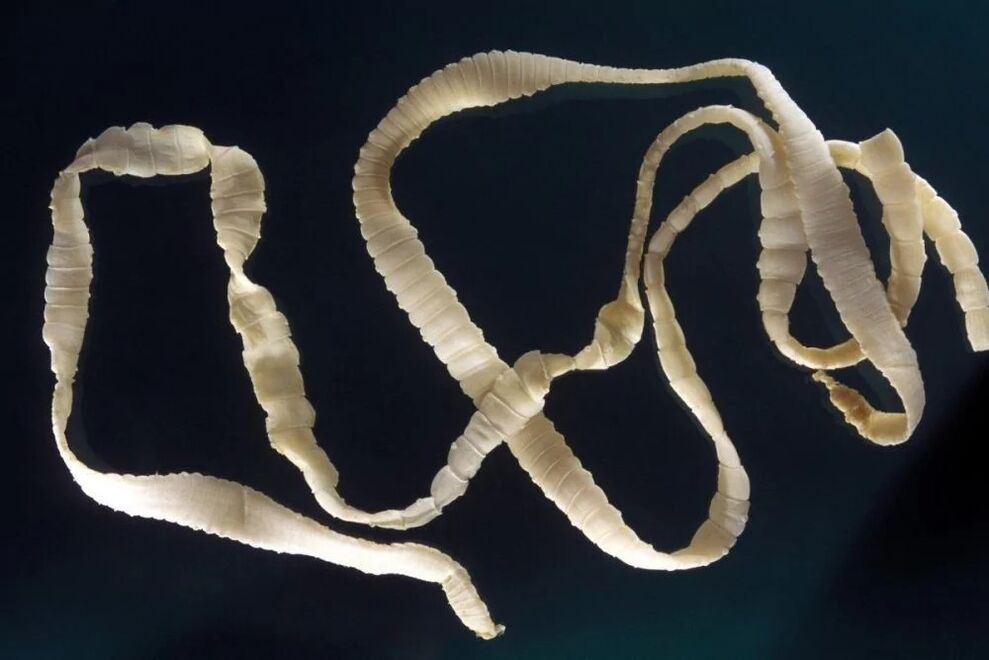
Diphyllobothriasis
The causative agent of this disease is a widespread tapeworm that affects the human intestine. The development of worm eggs occurs in fresh water. The scheme of tapeworms that enter the human body is as follows:
- Worm eggs are swallowed by crustaceans that live in reservoirs.
- Infected crustaceans are eaten by fish.
- A person is infected with a parasite by eating fish that has undergone inadequate heat treatment.
The symptomatology of the disease develops 1. 5 months after infection. The main sign of pathology is the presence of fragments of whitish flakes in the stool.
Attached to the intestinal mucosa, tapeworms absorb large amounts of vitamin B12. For this reason, people with diphyllobothriasis often have anemia. In addition, tapeworms can cause an increase in liver, spleen, intestinal obstruction.
Teniarinhoz
The causative agent of this disease is bovine tapeworm, which mostly lives in the human small intestine. During its expansion cycle, the helminth replaces two hosts: its device is a cow, the main one is a human. Cow tapeworms can live in the body for 20 years, reproducing and causing health hazards.
Usually, people get teniarinhoses after eating undercooked or uncooked beef.
The disease often persists without obvious symptoms and is detected by chance when a person sees helminth elements in his or her feces. In some people, in addition to the main signs of infection with helminths, pain syndrome may occur on the right side of the anterior abdominal wall.
Adult helminths can penetrate the appendicitis, pancreatic ducts, bile ducts, provoking acute inflammatory processes in them. With various parasitic attacks, intestinal obstruction can develop.
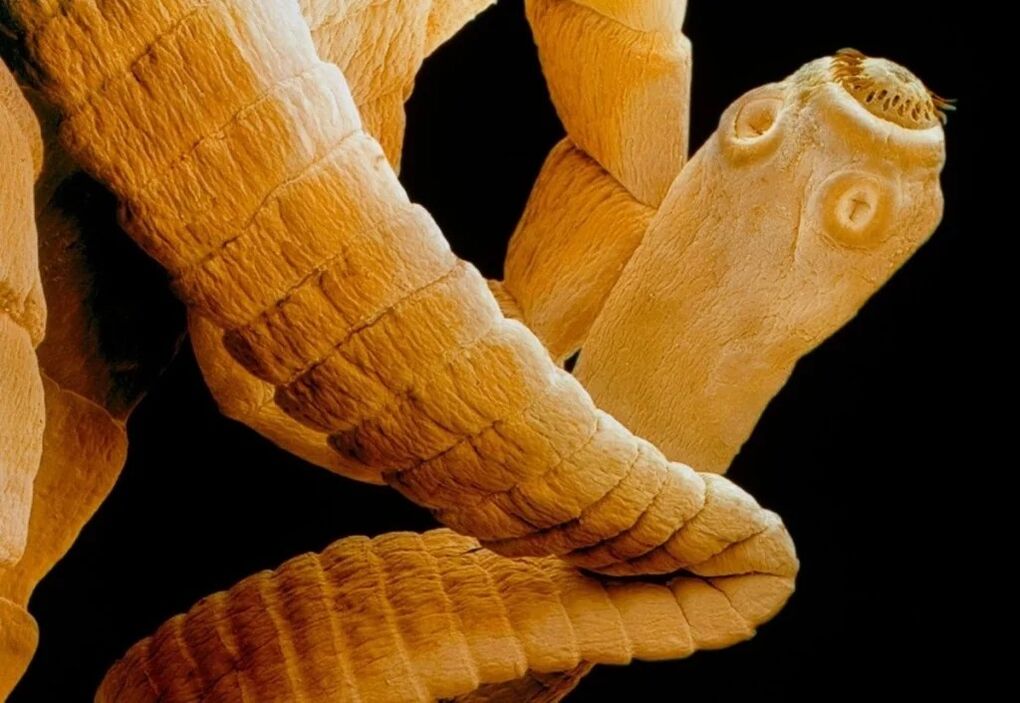
Teniosis
The causative agent of this disease is the pig tapeworm, which initially affects the human small intestine. Human infection occurs through consumption of raw or improperly cooked pork.
The parasite can spread to various organs and tissues, causing pain in the abdomen, back, limbs. Pathology is most preferred when the worms are localized in adipose muscle tissue and subcutaneous skeleton. When worms penetrate the eye muscles, they cause decreased visual acuity, lacrimation, and photophobia. The defeat of the pork chain of the brain can be fatal.
Inhaler
Flukes are leaf -shaped and have a high ability to reproduce at different times of the life cycle. Reproduction of worms is possible not only sexually with fertilization, but also without it. In addition to suckers, worms have many hooks and spines, as they can attach to the mucous membranes of organs.
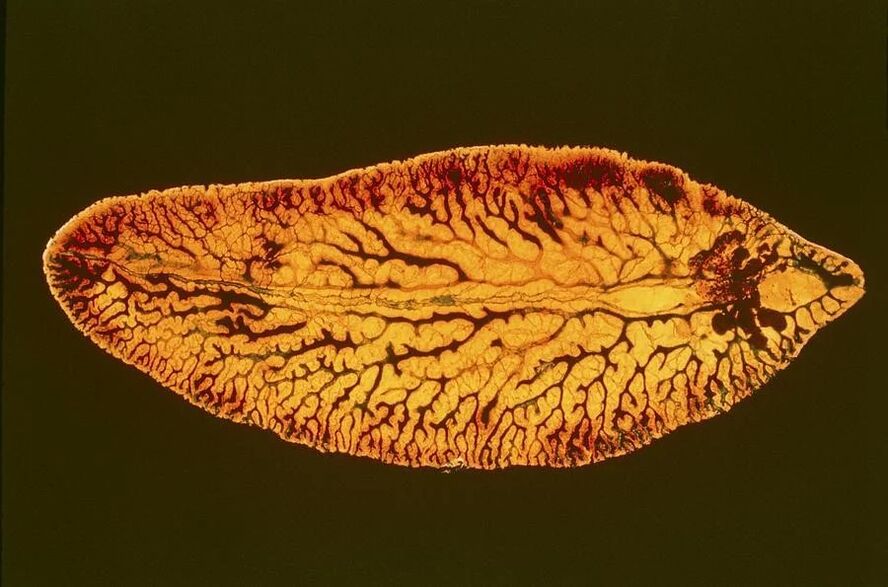
Common pathologies caused by the flu:
- fascioliasis;
- opisthorchiasis;
- paragonimiasis.
Fascioliasis
Fascioliasis occurs when the liver or gallbladder is damaged by hepatic fluke. Basically, the infection occurs when eating vegetables, whose water is used from open reservoirs.
In addition to the standard signs of a parasitic infection, a person may experience an asthma attack, which is accompanied by shortness of breath, flushing of the face, dilated pupils, and tachycardia. If an adult has caused a blockage of the bile ducts, then obstructive jaundice will develop. Pathological signs:
- spasm in the right hypochondrium;
- yellowing of the skin;
- fever;
- colorless feces.
Opisthorchiasis
The causative agent of this disease is a fake cat. The name of this parasite is due to the fact that, in addition to humans, it often infects cats and other fish -eating mammals.
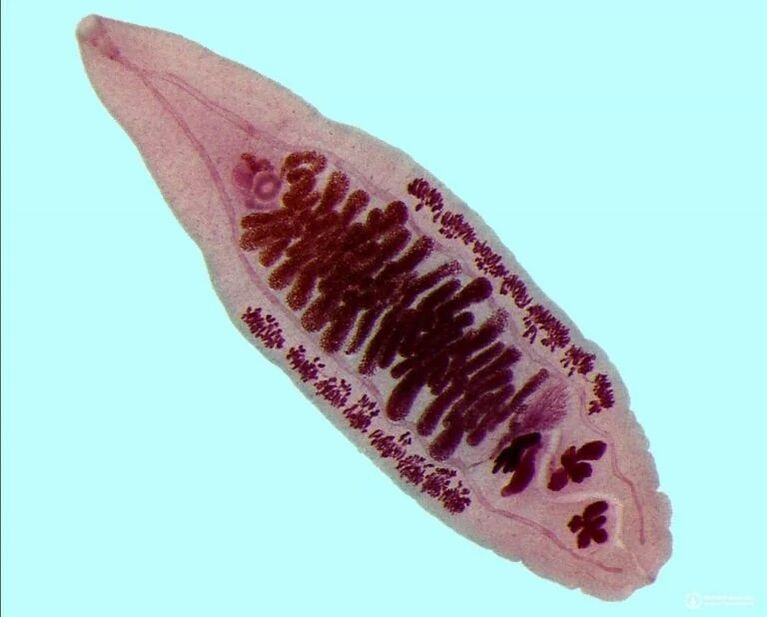
As a rule, cats happen to affect the liver and pancreas, causing inflammation of the organs. Symptoms vary and depend on the number of parasites. Patients may experience:
- symptoms of intoxication;
- fever;
- itching;
- itchy skin;
- pain in muscles, joints, right hypochondrium.
In some cases, helminths cause an increase in lymph nodes, the development of jaundice. Chronic forms of pathology often lead to hepatitis, liver cirrhosis.
Paragonimiasis
The cause of this disease is lung disease, which enters the human body with infected crustaceans.
First, the parasite enters the human intestine, then enters the abdominal cavity. The end point of his journey is lung tissue. In addition, these worms can penetrate the brain and affect the central nervous system.
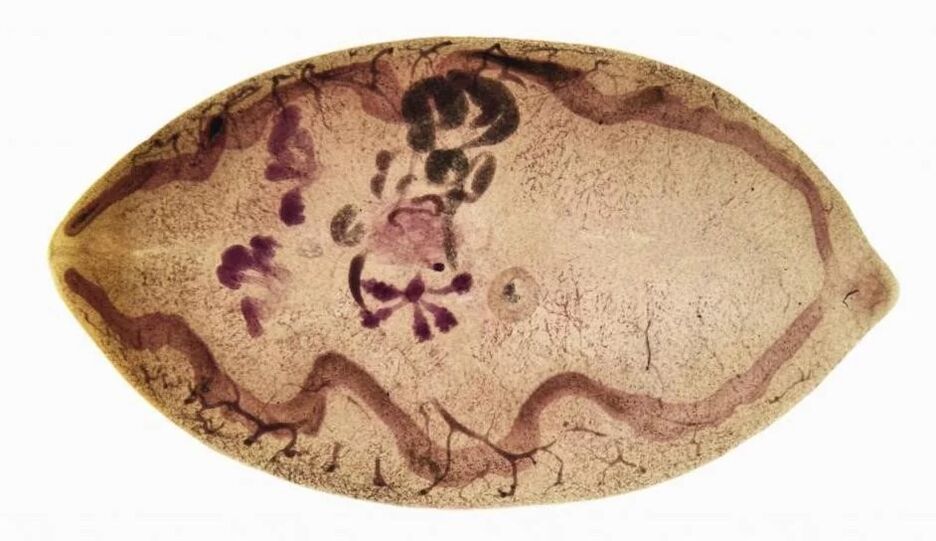
Signs of lung parasite invasion:
- chest pain;
- cough with phlegm, which may contain pus and blood;
- fever.
In some cases, helminths cause a violation of the function of lung ventilation and gas exchange during breathing.
Round worms
Due to its structure, ringworms (nematodes) can survive even in extreme conditions. Their bodies are covered with a three -layer musculoskeletal sac, which definitely protects the parasite from external influences.
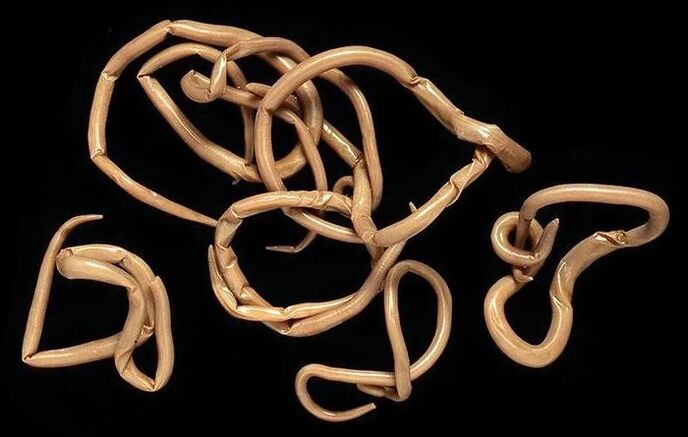
Common diseases caused by nematodes:
- ascariasis;
- enterobiasis;
- trichinosis.
Ascariasis
The development of the disease provokes ascaris, which is initially glued to the small intestine. The average length of an adult is 40 cm. Parasitic larvae can enter the human digestive system with unwashed vegetables and fruits, contaminated water. Also, hands that are not washed properly before eating are often the cause of ascariasis.
During the penetration of larvae into the human body, subfebrile temperature, allergic rash, and cough with sputum discharge can be seen. Signs of intestinal stage ascariasis (diarrhea, abdominal pain) are only observed when there are several parasites. As a rule, living in the intestines of one worm is asymptomatic.
Complications with various parasitic attacks:
- bile duct obstruction;
- purulent inflammatory processes in the gallbladder, liver;
- inflammation of the appendix;
- intestinal obstruction.
Enterobiasis
The disease is a cream worm - a small worm up to 1 cm. Helminths penetrate the human digestive system in the same way as tapeworms.
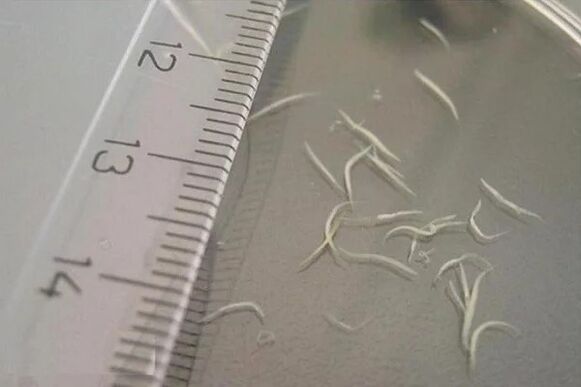
Currently, enterobiasis is the most common parasitic pathology in the world. Basically, the disease is diagnosed in children under the age of 10 years.
Symptoms, as in previous cases, only develop with various parasitic attacks. Children often experience diarrhea, mucus in the stool, difficult and painful digestion, itching in the anus, and nausea. With severe illness, limb spasms may occur. In addition, cream worms can penetrate the genitals, causing acute inflammation in them.
Trichinosis
The disease provokes Trichinella - one of the smallest parasitic worms. The length of the parasite rarely exceeds 4 mm. At the larval stage, worms can infect skeletal muscle. The exception is the myocardium - the tissue of the heart muscle. Adults paralyze the small intestine.
As a rule, human infections occur when eating half -roasted pork. At the same time, for the development of the disease, it is enough to eat only 30 g of meat infected with the parasite.
Pathology is indicated by standard symptoms of parasitic invasion. At a later stage, swelling of the eyelids, face, arms and legs, pain in the lower back, masticatory muscles may occur. Possible complications are total or partial loss of movement, paralysis of the airways.
How to prevent helminth infections?
To reduce the risk of being infected with parasitic worms, it is important to follow the following guidelines:
- Wash hands thoroughly before eating, after visiting streets, public places.
- Observe the correct technology for cooking meat, fish. Heat treatment of meat and fish must last at least 20 minutes.
- Do not eat dried or dried fish.
- Carry out pet cleaning.
- Tested periodically, even if you have no signs of pathology. The most common diagnostic methods are macroscopic and microscopic examination of the stool. The first method allows you to detect adults, the second - eggs and larvae of worms.
























